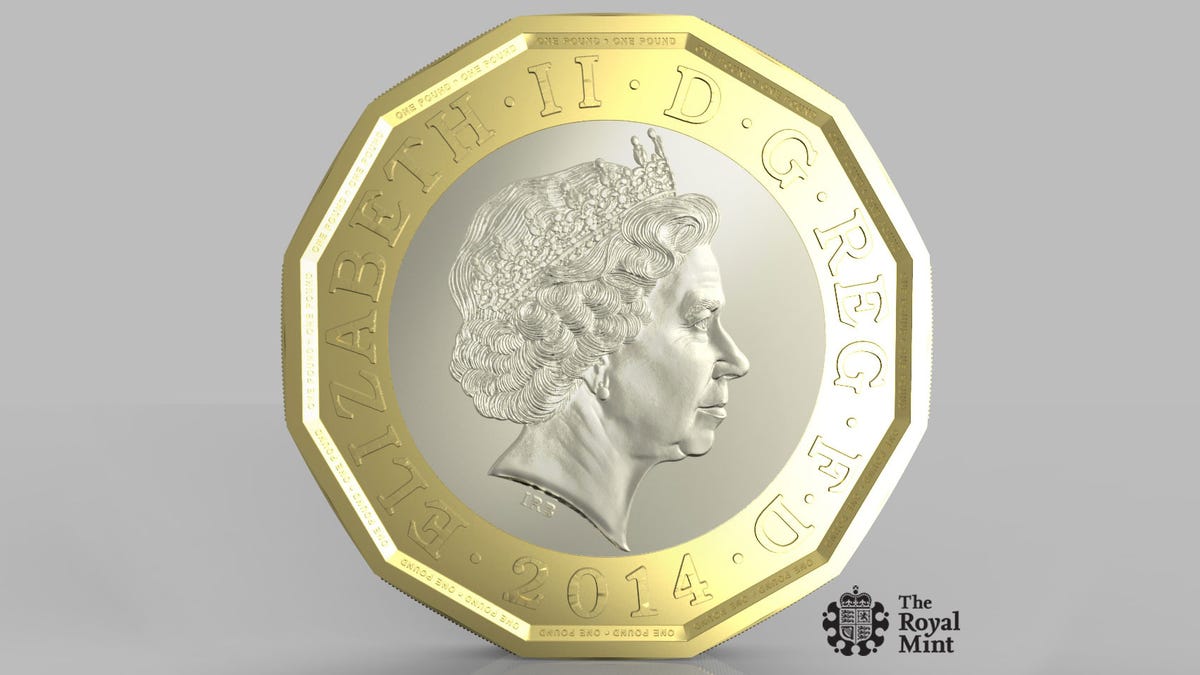To thwart counterfeiting, UK mint proposes new pound coin
A new 12-sided design has both covert and overt signs that make it easier to find fakes. But modernization only goes so far: the 766-year-old Trial of the Pyx tradition lives on to check the metals.
Electronic transactions with credit and debit cards are commonplace, Square and others offer payments by e-mail, and Bitcoin fans are pushing even more radical changes to money. But the UK's Royal Mint believes there's still a place for innovation in that lowliest of financial instruments, the coin.
On Wednesday, the mint proposed a new 12-sided one-pound coin that it said would be "the most secure circulating coin in the world to date." The coin "utilizes multiple layers of cutting edge technology and would allow the United Kingdom to rapidly reduce the rate of counterfeit coins entering general circulation."
Central to the promise is ISIS -- Integrated Secure Identification Systems -- that includes both visible and invisible identification checks, can be authenticated rapidly by machine, and which involves metal plating that's durable but cheaper than the existing cladding approach to manufacturing. It's also got forensics characteristics that can help with investigations.
"With advances in technology making high-value coins like the one-pound coin ever more vulnerable to counterfeiters, it's vital that we keep several paces ahead of the criminals to maintain the integrity of our currency," said Chancellor of the Exchequer George Osborne in a statement. "I am particularly pleased that the coin will take a giant leap into the future, using cutting-edge British technology while at the same time paying tribute to the past in the 12-sided design of the iconic threepenny bit."
The existing pound coin was introduced in 1983. A new coin will replace it, but final decisions about its design will be made over the summer, and the design for the tails side of the coin will be put to a public competition.
Other currency modernization efforts are afoot at the mint. The five-pound and ten-pound notes will be printed on polymer starting in 2016, bringing new meaning to the phrase "plastic money."
But modernization only goes so far with the mint. A quality-assurance ceremony called the Trial of the Pyx that began in 1248 as a proof that coins were made of the correct metal ingredients continues to this day. One began in February, with results expected in May, the Mint said:
During the ceremony, coins are selected at random from the Pyx chests, with individual coins being placed in copper bowls and the remainder in wooden bowls which are then weighed for accuracy. The Trial is then adjourned until May to allow time for trial coins to be tested by Goldsmiths Assay Laboratory and the National Measurement Office.
Whilst modern methods such as XRF (X-Ray Fluorescence) are often used in assaying, it is still only the centuries-old methods such as cupellation (the fire-assaying of gold) that are accurate enough in the testing of metals and therefore remain credible for checking the accuracy of the coins of the realm for the Trial of the Pyx verdict.


